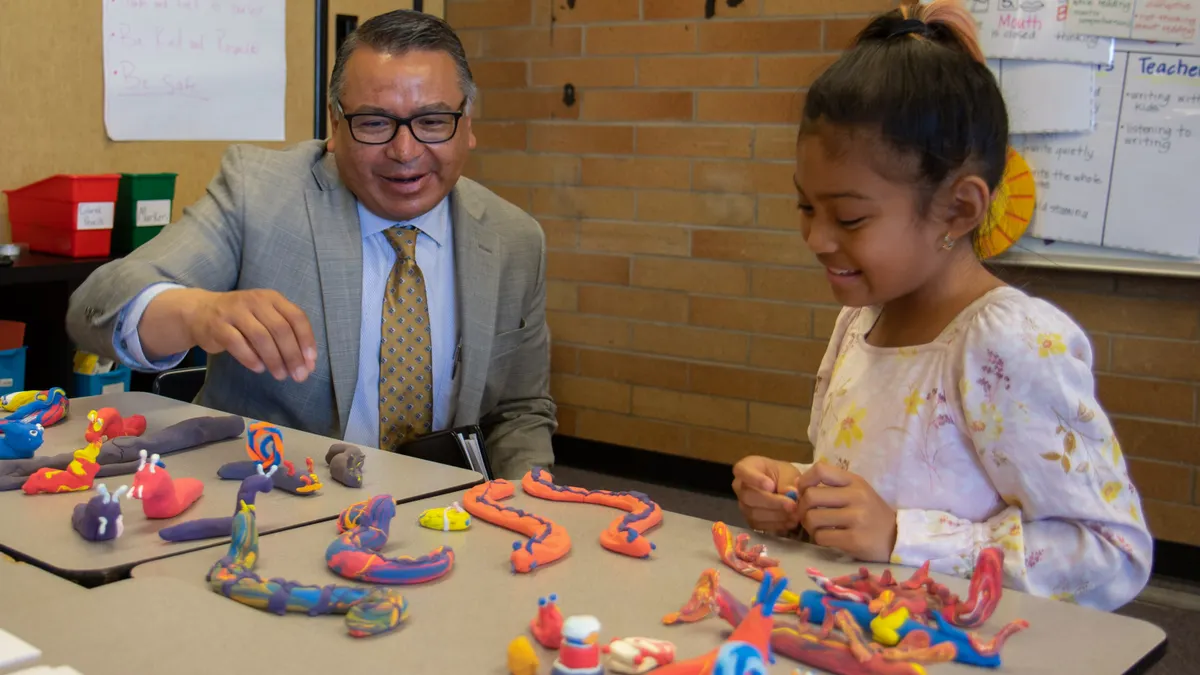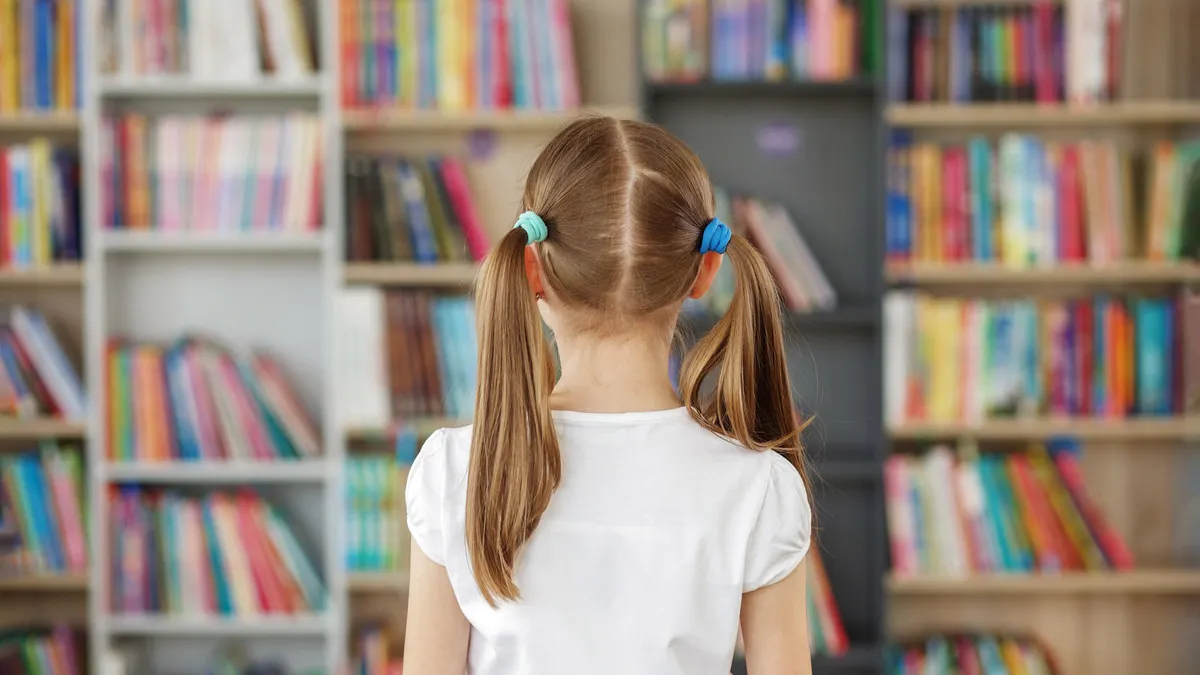Correction: A previous version of this story incorrectly identified Colleen Collins' school, Chicago International Charter School (CICS) West Belden.
Once reserved for special institutions that charged high tuition rates or parents who decided to teach their children at home, personalized learning has now been realized as a better way of learning by public schools. The traditional school model created during the Industrial Revolution — with a teacher at the board, students at desks and a one-size-fits-all curriculum — is being replaced by a school model that will better prepare students for a future globalized workforce.
In 2013, 13-year-old Logan LaPlante gave a TEDx Talk about “HackSchooling.” During his presentation, he spoke about how happiness and health should be a part of the education experience, quoting the University of California, Irvine's Dr. Roger Walsh, who said the current education system teaches people how to make a living instead of how to make a life.
Hacking his education includes what Walsh calls therapeutic lifestyle changes, or TLCs: exercise, diet and nutrition, time in nature, contribution and service, relationships, recreation, relaxation and stress management, and religious and spiritual observances.
“I don’t use a particular curriculum, not dedicated to anyone’s particular approach. I hack my education,” said LaPlante. “I take advantage of opportunities from family and community ... opportunities to experience what I’m learning, not afraid to look for short cuts to maximize results.”
LaPlante still studies math, science, history and writing, but he said he didn’t like to write in traditional school because the subject matter didn’t interest him. Now, instead of writing about “butterflies,” he’s able to write about things he’s passionate about — such as skiing.
“When you are motivated to learn something, you can get a lot done in a short amount of time and on your own,” said LaPlante during his presentation.
LaPlante participates in activities at the Squaw Valley Children’s Institute and other community organizations. Part of his studies include an internship at Big Truck Brand, where he cleans and practices sewing because he has chosen design as a possible career interest.
The personalized learning experience may come easier to students such as LaPlante, who lives in Olympic Valley, California, where according to citydata.com the average household income is about $68,000 a year. Can that experience be applied to the public school system, where classrooms are often overloaded with students from low-income families?
Personalizing at scale
Alexandra Levit, managing partner at workplace consulting firm PeopleResults, sees the personalized learning model as a must for all educational institutions.
“Children today are preparing to enter a workforce of one, where everyone has a unique career path and combination of skills and expertise,” said Levit, who uses a snippet from La Plante’s TED Talk in her future workforce presentations. “They must gain experience early in taking charge of their own learning and customizing it to their specific needs.”
Amy Huang, senior director of programs at LEAP Innovations in Chicago, reinforces that view, seeing that the needs of students and the workforce have changed in the century since the Industrial Revolution. Huang said that when LEAP, which offers innovative tools and education programs to schools nationwide, began to present its research to schools, educators noticed that students weren't emoting.
“Teachers understood that what they were doing wasn’t working,” said Haung. “They were seeing complacency in students. They’d reached a point where they would plateau and there was no engagement or motivation.”
Since its inception about four years ago, LEAP has introduced personalized learning programs to about 120 schools including Chicago Public Schools (CPS) and those in the surrounding suburbs, charter schools and Archdiocese of Chicago Catholic Schools.
“Personalized learning is probably the best way to serve these students, because instead of a teacher giving a specific lesson that may be too easy for some kids and too hard for others, the lesson can be adapted to meet students where they are,” Levit said. “It is necessary, however, to ensure that low-income kids have access to the right technology to make personalized pearning a reality.”
One of the ways Stacy Stewart, principal of Belmont-Cragin Elementary School in CPS, is using personalized learning is to break down language barriers through a dual-language program.
“If you go to any other place in the world most people are bilingual or multilingual,” said Stewart, whose school population is 98% Latino. “When students leave this school, they will speak English, Spanish and a third language: coding.”
One aspect of the personalized learning model that teachers are becoming accustomed to is studying the student. Instead of creating a curriculum based on a set of state or national standards, standing in front of the class, and requiring all students to meet or exceed it, they are using technology programs such as iStation (English language learning and literacy) and DOJO (a communications program described as “Facebook for education”) to empower students to learn at their own pace and encourage creativity.
“With the personalized learning model, we can get [students] to learn in their own way,” said Mary Pehar, 6th grade math teacher at Chicago International Charter School (CICS) West Belden.
Sara Altinay, a kindergarten teacher at Belmont-Cragin, said technology programs such as istation allow students to work independently at their personal level, which gives her the opportunity to do more supervising and help students as needed.
In the future, “the twin forces of AI and globalization will give rise to the flipped classroom model, in which students proactively learn about topics that interest them via online learning methods, and then they come to class ready to discuss these topics with other students and the teacher,” Levit said. “Whether in a classroom or at home, AI will allow learning platforms to serve up relevant content based on the student's skill level and acquired knowledge.”
Giving students ownership of their learning
Students are in the beginning stages of taking ownership of their learning by taking the lead during parent-teacher conferences, using that time to showcase their portfolios and discuss their strengths, weaknesses and where they believe they need to improve.
“Parents are more excited to hear the reports from their children,” Altinay said.
Traditional school activities such as spending time with the principal, having parents visit the school and hanging out in the hallway no longer mean trouble.
Students use the DOJO system to post and text everyone — even the principal. Parent mentor programs invite parents to help in the classroom for two hours, four days a week, and students using space in the hallway to work on a special project is the new normal.
Ruth Muhlberger, grades 6-8 math teacher at Belmont-Cragin, said the personalized learning model has inspired personalized teaching for her and her co-teachers.
Muhlberger said she and the English language arts and science teachers rotate classes every day. She noticed that the 6th and 7th grade students weren’t getting as robust of an experience as the students she met earlier in the day because she always met with them after lunch. After speaking with her co-teachers about the matter, she discovered they had the same concern, so they decided to change the order in which they saw each class level every quarter.
She said that she’s glad she now works at a school with an administrator who allows this type of exploration and flexibility.
Design makes a difference
Traditional educators are also taking the next step in visualizing a more conducive physical space for the personalized learning model.
Colleen Collins, school director of CICS West Belden, said once the school began using personalized learning, one of the first things it did was change the physical space in classrooms.
Collins said the setup of “30 desks facing one” was transformed to a space for large group lectures with the teacher, personalized spaces and peer group spaces. She said the daily schedule of when class lessons stopped and started was also extended from 45 minutes to up to two-and-a-half hours in order to push ownership of learning with guidance.
Stewart also noticed that there was nowhere in Belmont-Cragin for children or their parents to access community resources or programs. Working with community partners, she set out to redefine what school is and how to design a school building to meet that definition.
During a professional development trip to Italy, Stewart was inspired by the Reggio Emilia educational system, which integrates education into the fabric of the local government, community and its people to develop a learning space that also serves as a community center.
The school and community center is expected to be built in Chicago's Riis Park by the middle of next year, according to Stewart, who said she has been working on the idea for five years. Her goal is to help meet the needs of the community and make “nature and classrooms the third teacher” in personalized learning. Community center components of the building will include an indoor pool, kitchen, dining hall, a clinic, shared office space, a place for social service providers to host meetings and workshops, and a sensory garden.
The school space will include sensory rooms and movement spaces for students at the kindergarten level; designated rooms for learning specialists, who currently have to find quiet corners or unused closets in the traditional school building; gym space; a dance and yoga studio; 3-D and 2-D art studios; a genius bar; idea labs; a video screening room; a music studio; and a seminar and work presentation space.


















